Lemon Macarons
As an Amazon Associate, I earn from qualifying purchases. Read the full disclosure here.
These sweet and tart lemon macarons are filled with a tangy lemon buttercream. The lemon French macarons feature actual lemon zest as well as lemon extract to bring all the flavor without weighing down the iconic light and airy macaron texture.
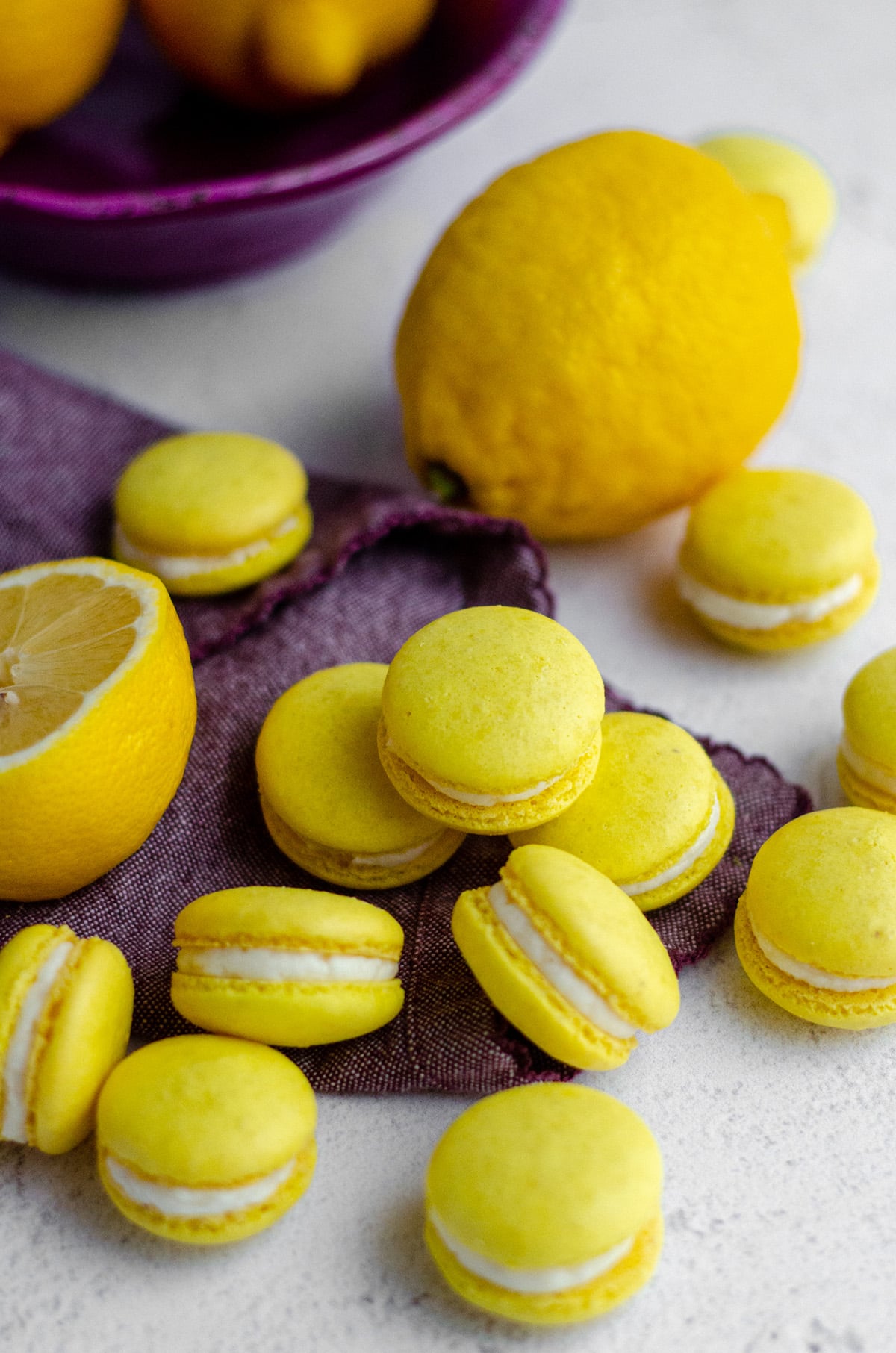
Macarons have long been on my list of things to tackle, but I’d always been intimidated by their finicky nature and wanted to start with as much knowledge of them before I actually put my hands on some ingredients and batter.
Is that a weird approach? Maybe. But I am here to help guide you through making macarons as a fellow amateur.
Because here’s the thing– I am absolutely not a pro at these. I probably never will be. But I do know some folks who are, and I picked the heck out of their brains before diving in head first to these bad boys.
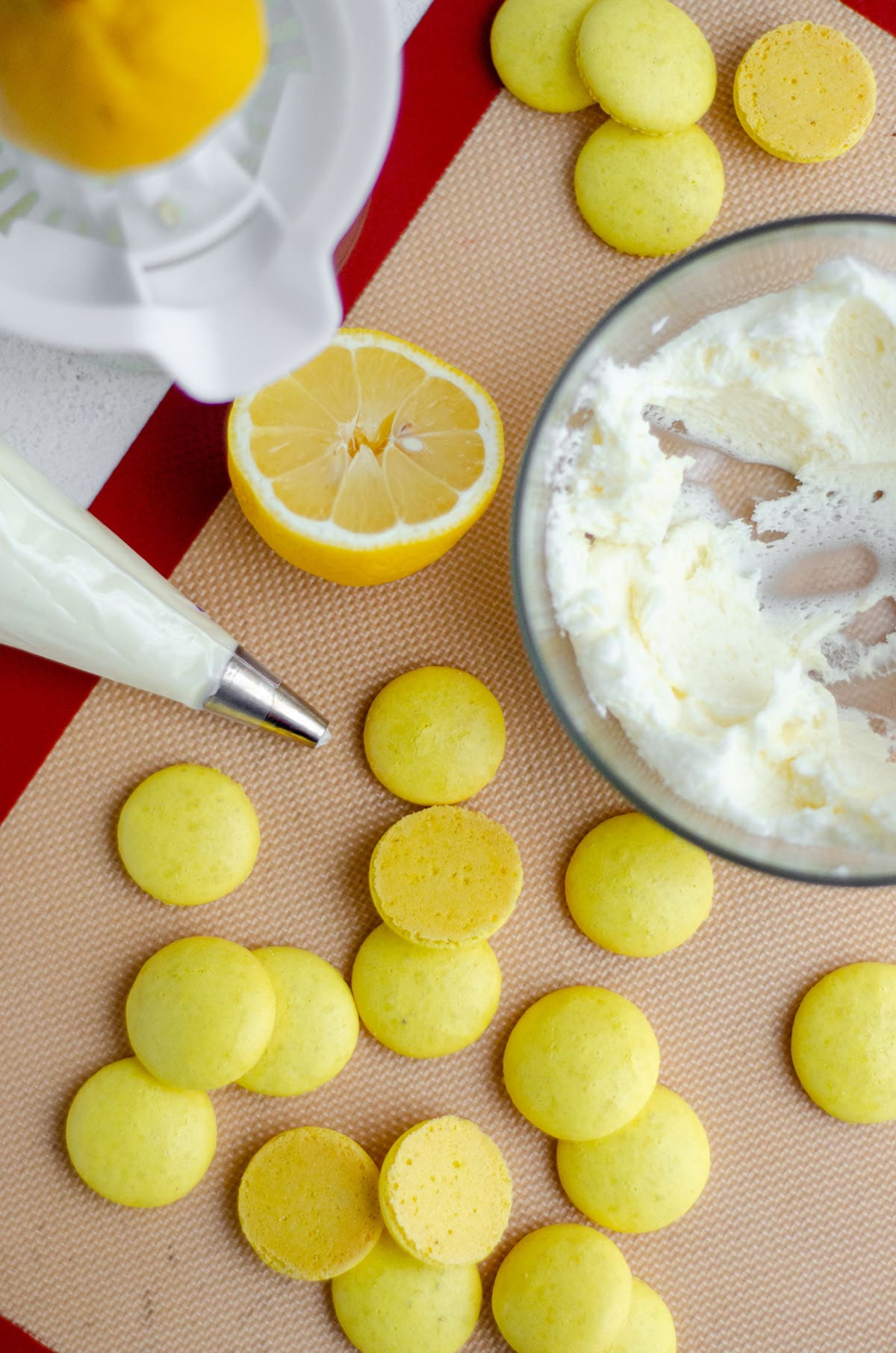
And how that works out well for you is that I am putting all of my best resources in this post for you so that you, too, can start with as much knowledge as possible before getting down to it.
Perhaps you’re here and you’ve already got a great knowledge of the how-tos of macarons, and that’s great. Please enjoy this sweet and tart lemon macaron recipe and let me know how you liked it!

If you’re one of my readers who has been egging me on to learn and share a macaron technique, I’ve got you! Let’s do this!
FIRST, LET’S TALK ABOUT THE BASIC MACARON COMPONENTS
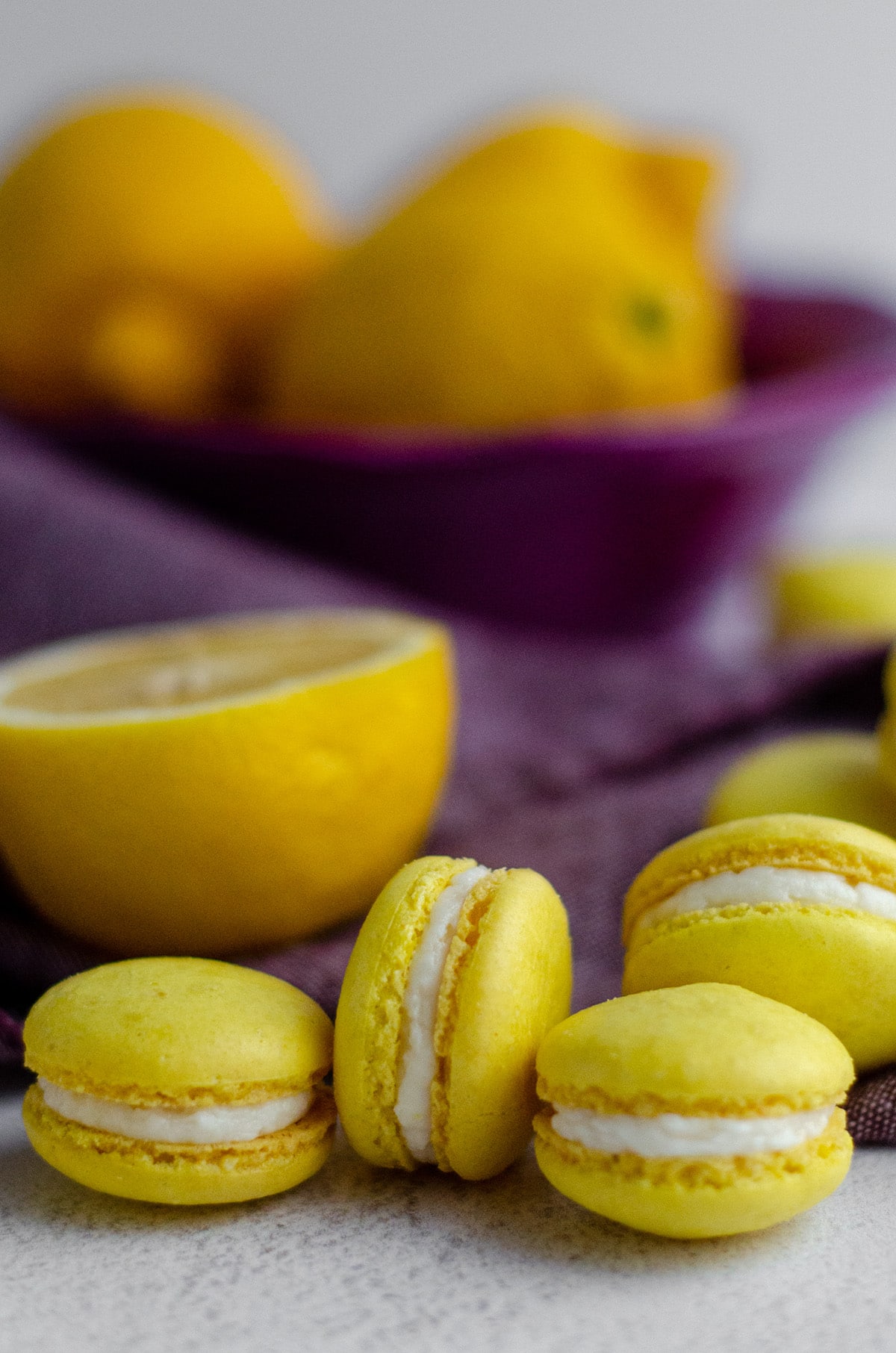
THE MERINGUE BASE
A meringue is simply a mixture of egg whites and sugar. The egg whites serve as the protein structure to the macarons, and the sugar helps stiffen this structure.
I begin my meringue by creating a double boiler to heat the egg whites and sugar. Not only does this warm up the egg whites (cold egg whites are quite difficult to beat to peaks), but it also dissolves the sugar a little more quickly.
This process only takes about 2 minutes. You’re looking for a white and frothy mixture, and when you dip your pointer finger in, you should be able to rub it against your thumb without feeling any sugar granules.
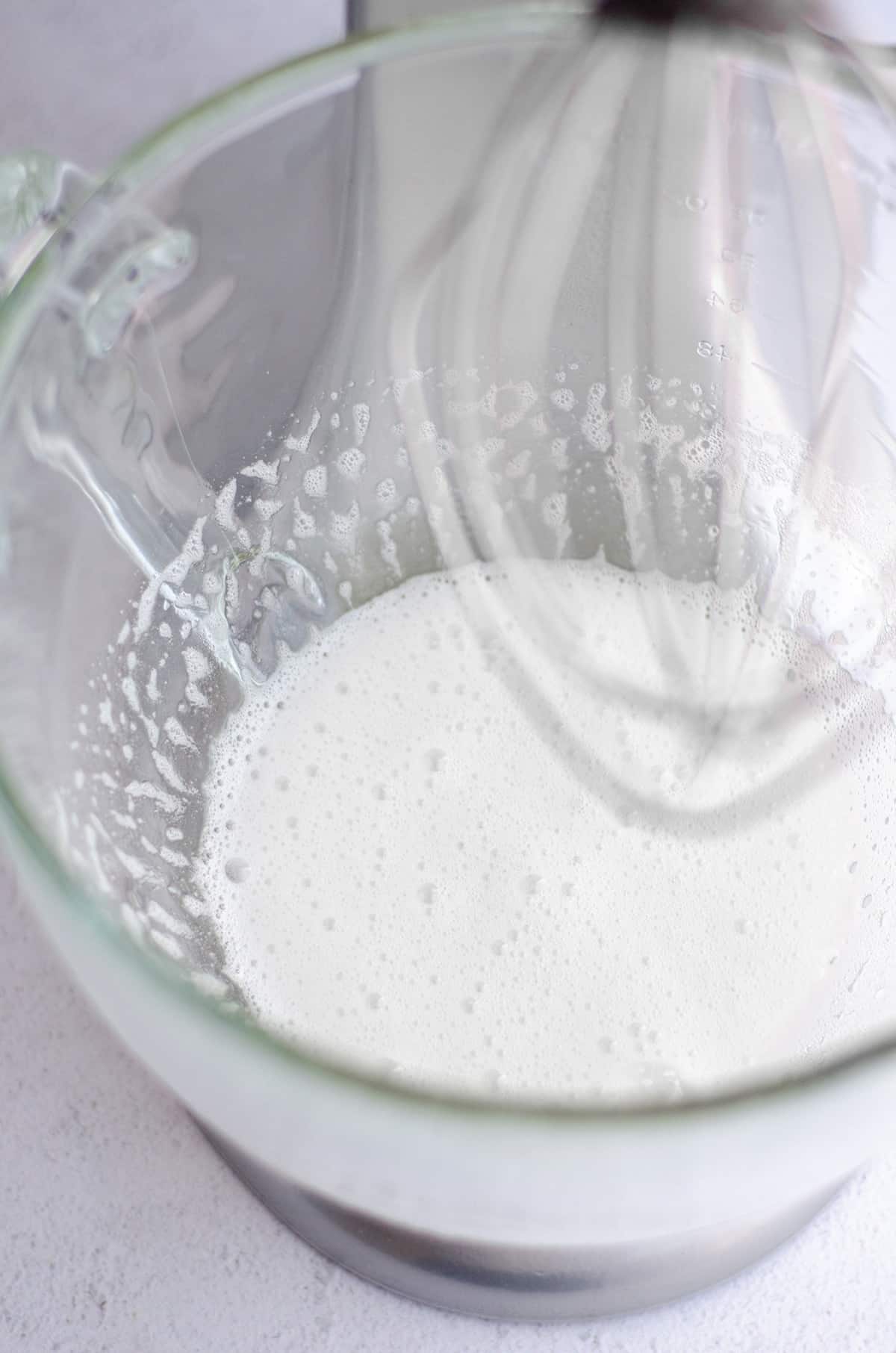
THE STIFF PEAKS
We take this meringue to stiff peaks, which means when you pull your whisk out of the bowl, the meringue stands straight up (we also look for stiff peaks when we make homemade whipped cream).
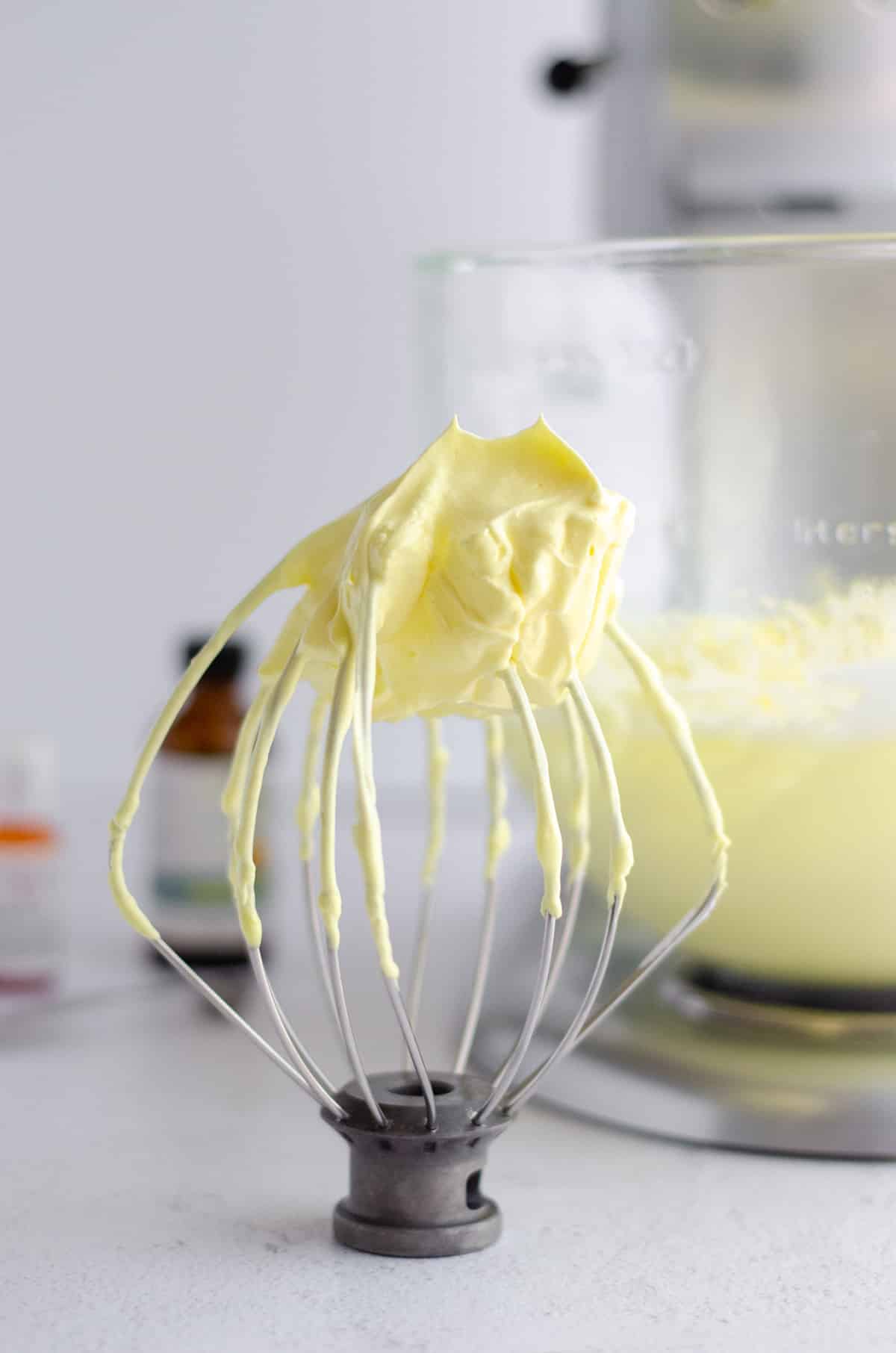
This is a crucial step in laying the foundation for macarons. I royally screwed up my first batch by only taking my meringue to medium peaks.
However, once you do reach medium peaks, it’s safe to add your lemon extract and yellow gel coloring.
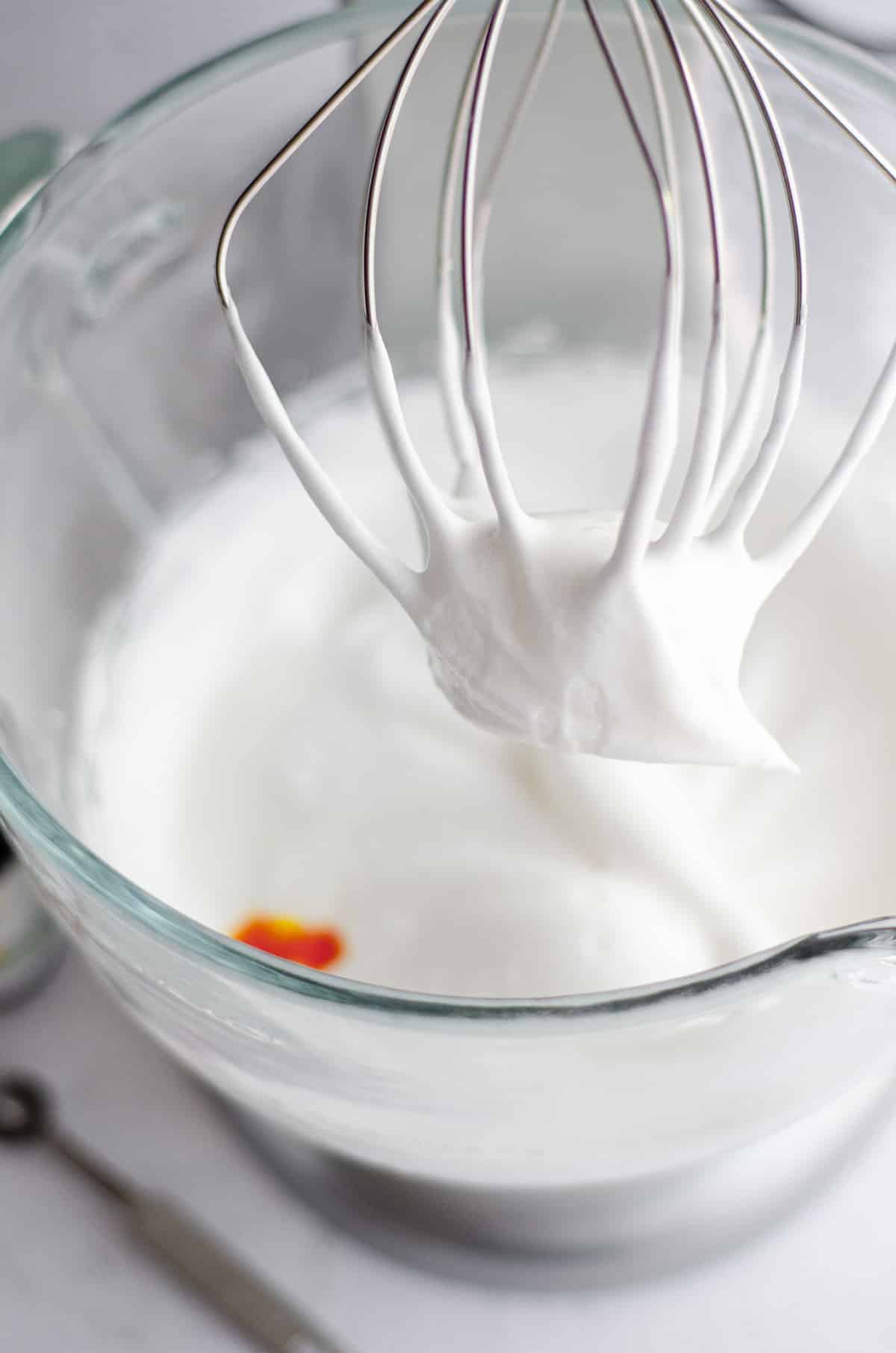
You don’t want to add it at the beginning of whipping because you don’t want anything interfering with that reaction. Once medium peaks are present, it’s safe for adding just this tiny extra bit of liquid.
THE DRY INGREDIENTS
Macarons don’t use traditional all purpose flour, but rather almond flour or almond meal. You’ll sift this almond flour or meal with powdered sugar until there are no clumps, then add a touch of salt.
For these lemon macarons, you’ll also add your lemon zest in this step and sift with everything else. Sifting your lemon zest assures any larger pieces don’t make their way through. The dry ingredients must be clump-free!
THE MACARONAGE
Yes, this is a real word. I thought it was an Americanized slangish term, but it’s not. It’s French (just like the macarons). This is simply the action of mixing the macaron batter in a very specific way.
Don’t worry, I have a video (not my own– I watched this at least 5x before starting) for this part, but here are the basic stages:
You’ll be working in the bowl that’s holding your meringue, which is now at stiff peaks.

Add half of the dry ingredients to the entire meringue mixture, then fold (do not stir) them in.
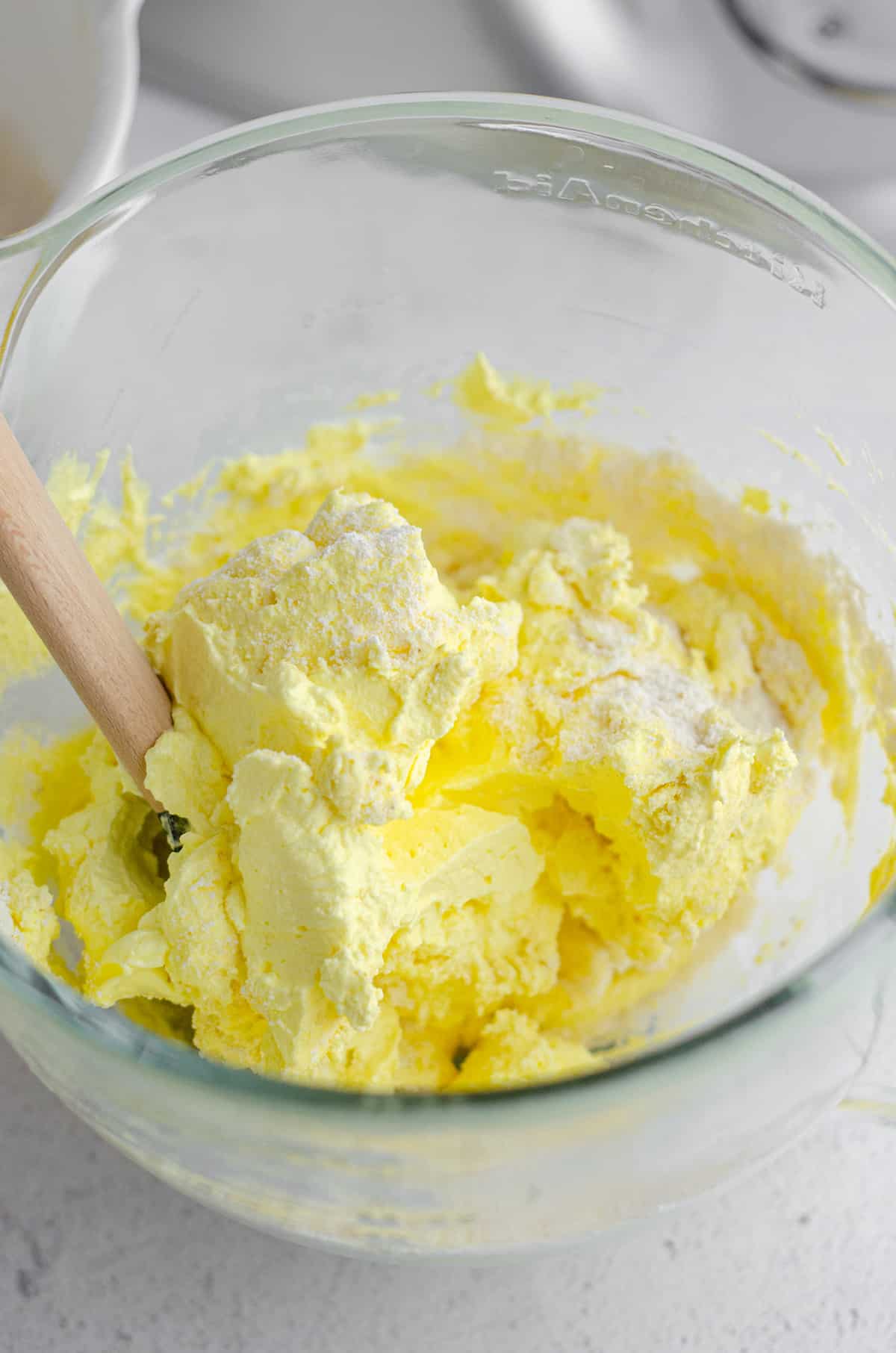
Add the rest of the dry ingredients, and continue to fold.

Once all of the dry ingredients have been incorporated, begin pushing some of the air out of the batter (this is where the video becomes incredibly helpful– I could not understand what “drag the batter around the bowl” meant until I saw it).
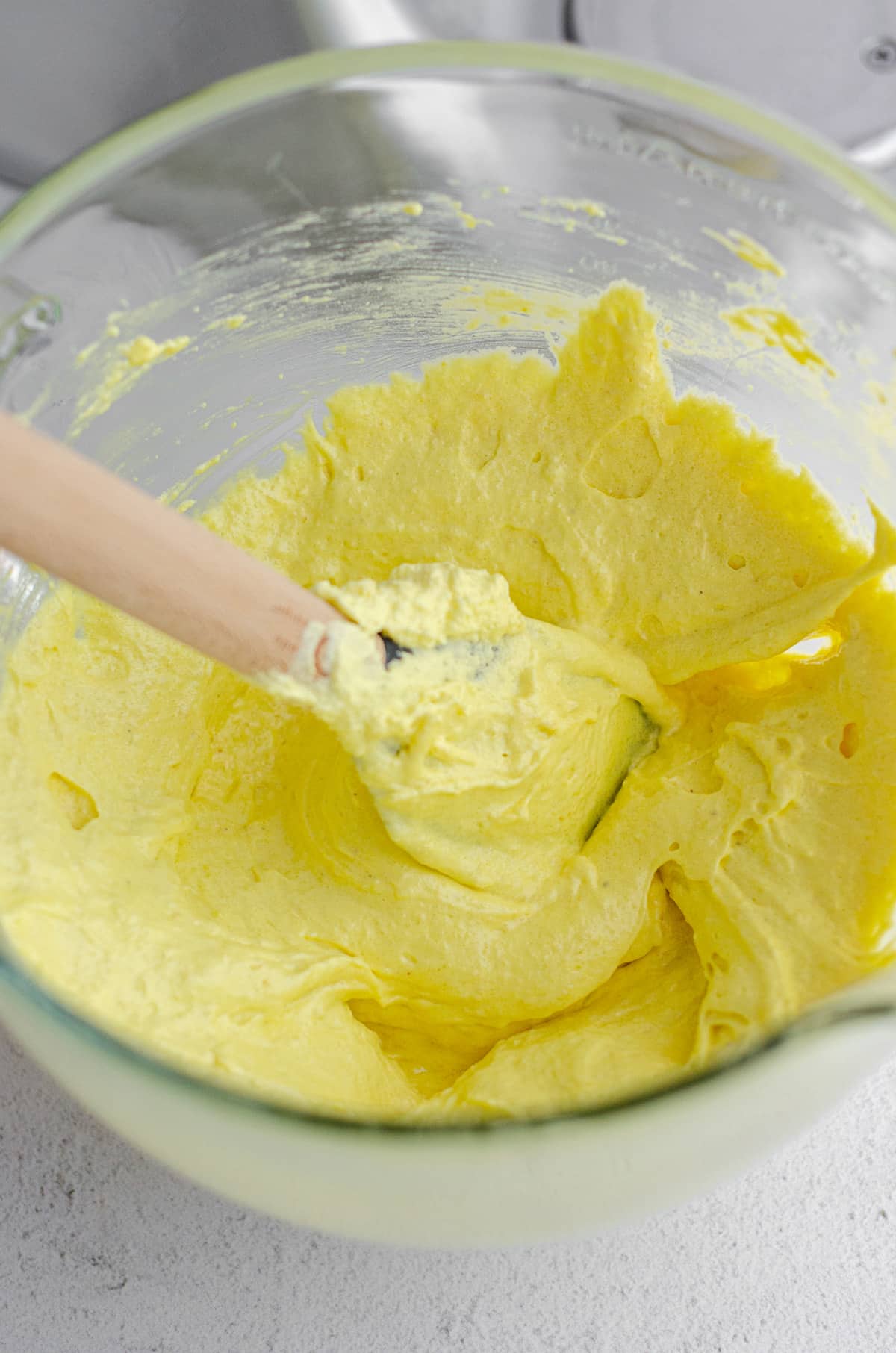
THE BATTER TEST
You’re looking for a very specific texture and viscosity of batter to call it ready to pipe. There are a bajillion ways to look for or test for this, but I like the “figure 8” method.
The video I’ve linked uses a “ribbon” method, but it looks for the same thing– you want to be able to draw a figure 8 into the batter two or three times without the batter breaking, and then watch for it to sink into itself after about 20 seconds.

Longer than this, and your batter still has a little too much air in it. Any shorter and you’ve pushed out too much air and ruined your batter.
This is so sad, and something I actually did with my third batch.
The video I linked shows testing the batter, determining it needs more air pushed out, doing so, and then landing on the perfect consistency.
THE PIPING
You’ll pipe your macaron batter into your silicone baking mat, which will be on your baking sheet, and between the two may or may not (not if you’re daring!) be a template to guide you.
I used a template from my friend Phillip at Southern Fatty. I printed out two sheets, and folded over the shorter sides to connect them and make one long template that fit my baking sheet perfectly.
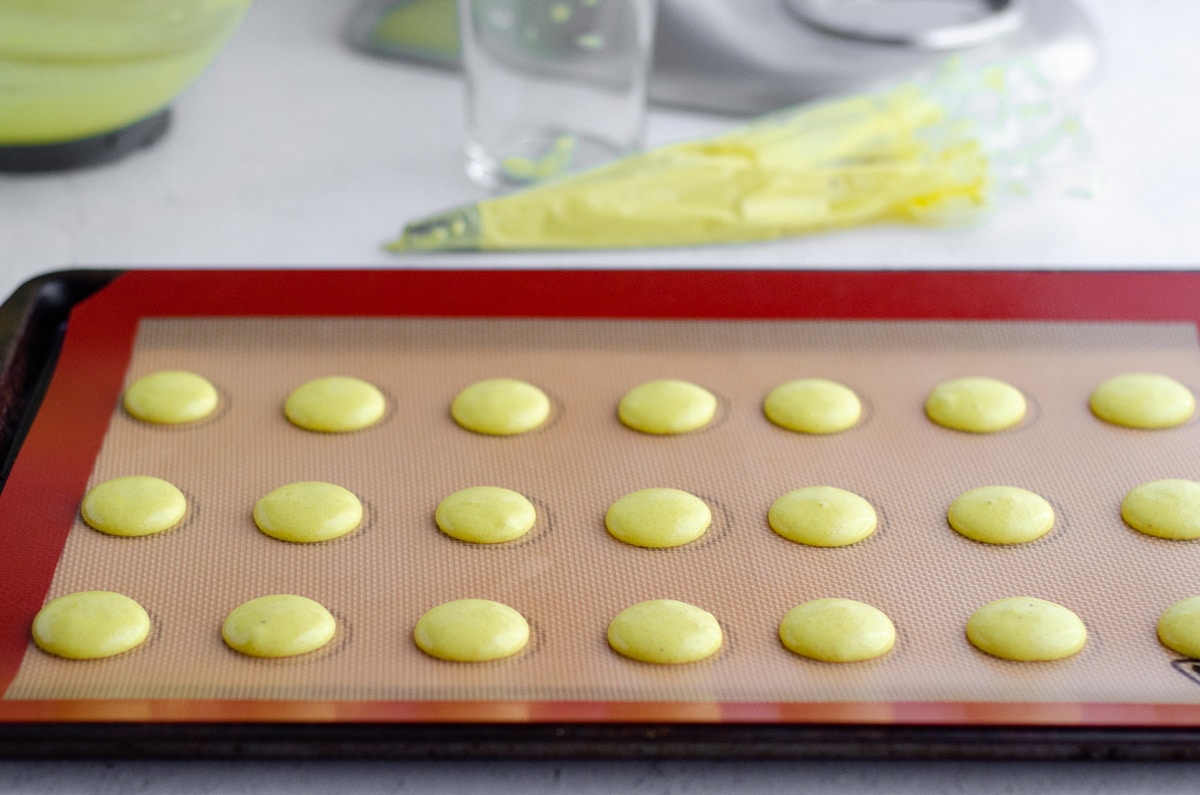
Once you’ve piped, you can pull the template out from under your baking mat. Just don’t forget to pull it out from under the baking mat on your second baking sheet before putting it in the oven (I almost did this so many times).
THE DEFLATING
Once you’ve piped your macaron batter onto the baking sheet, it’s time to pound out the air.
You’ll rap your baking sheet onto the counter a few times. As you do this, you’ll see little bubbles rise to the top of some of your mounds of batter. This step removes any extra air trapped inside those rounds.
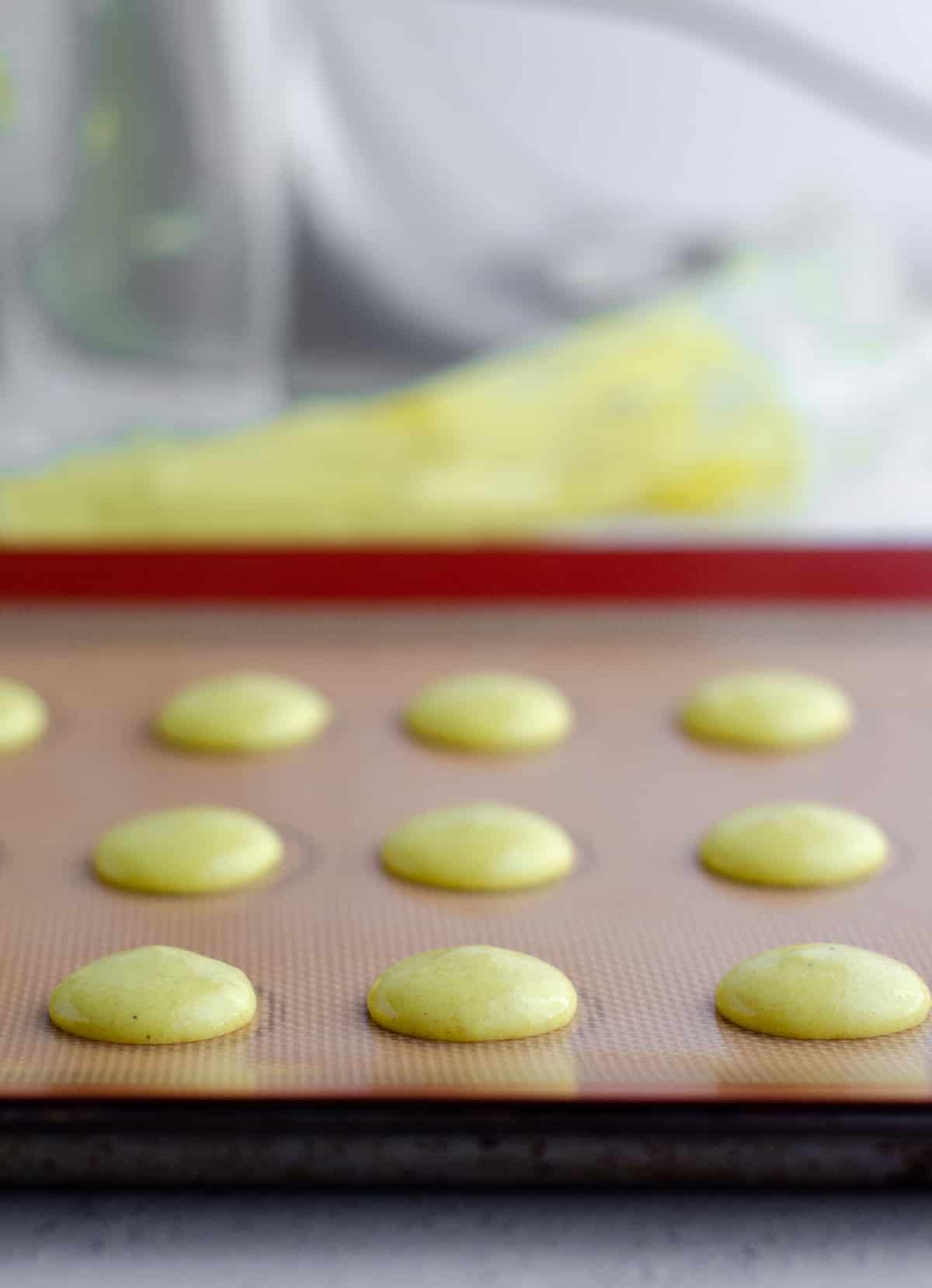
If any of the bubbles don’t pop, feel free to carefully prick them with a toothpick.
THE SKIN
This is most certainly the strangest part of the whole macaron thing– once you pipe your rounds and bang out the air, they need to rest for at least 30 minutes to develop a skin. This is quite literally a layer of hardened egg whites that will hold your entire macaron top together in the oven.
This skin is also what allows your baked macarons to develop the iconic feet. The perfect balance of moisture and skin = perfect feet. If you’re interested in reading about my troubleshooting, batch #2 is the one that proved how necessary this perfect balance actually is.
Once all of these components have come together in perfect harmony, beautiful little macarons will await you when you open your oven to greet them with an anxious and hopeful smile.
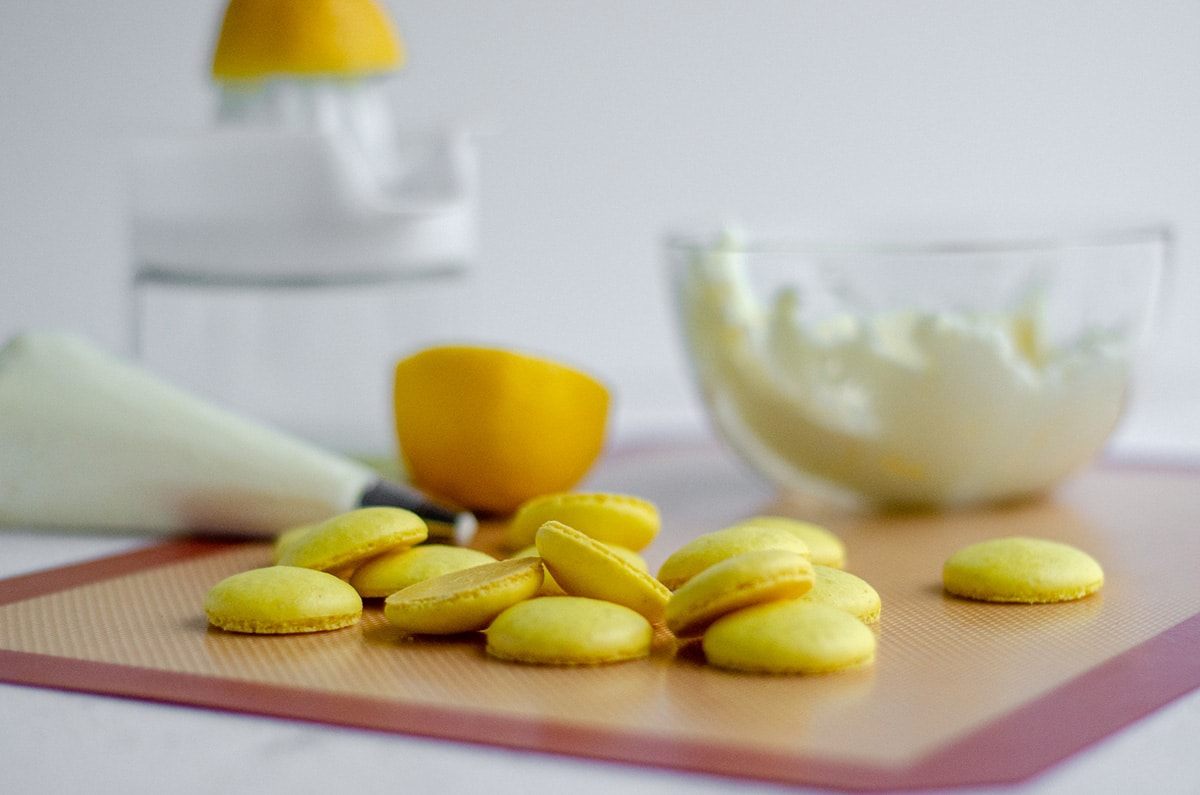
You can test for skin by gently running your finger over a mound of batter. Your finger shouldn’t stick and it shouldn’t disturb the mound.
If there is no skin present after 30 minutes, it’s fine to wait longer. Humidity, temperature, or Mercury in or out of retrograde can affect macaron skin. As one of my pros told me “the skin tells you when it’s time to bake.”
So take more rest/drying time if the skin tells you to.
THE BAKING
Just a quick 14ish minutes at a low 300ºF is all it takes. You’ll need to allow the shells to cool completely on the baking sheet before removing them and filling them, because they are a tad fragile.
IF YOU ARE INTERESTED IN MY OWN PERSONAL TROUBLESHOOTING AND HOW I ARRIVED AT MY RECIPE, KEEP READING! IF NOT, PLEASE PROCEED TO THE RECIPE AND ENJOY!

Before I dove in head first to French macarons, I studied a few different techniques. I settled on the Swiss meringue method (the cooking of the egg whites and sugar) because it sounded easier than others, and it used methods that I was very familiar with.
I also set the bar very low for expectations. I built in room for failing, knowing it was unlikely I would nail the perfect macaron on the first try, and I’m really glad I did that.
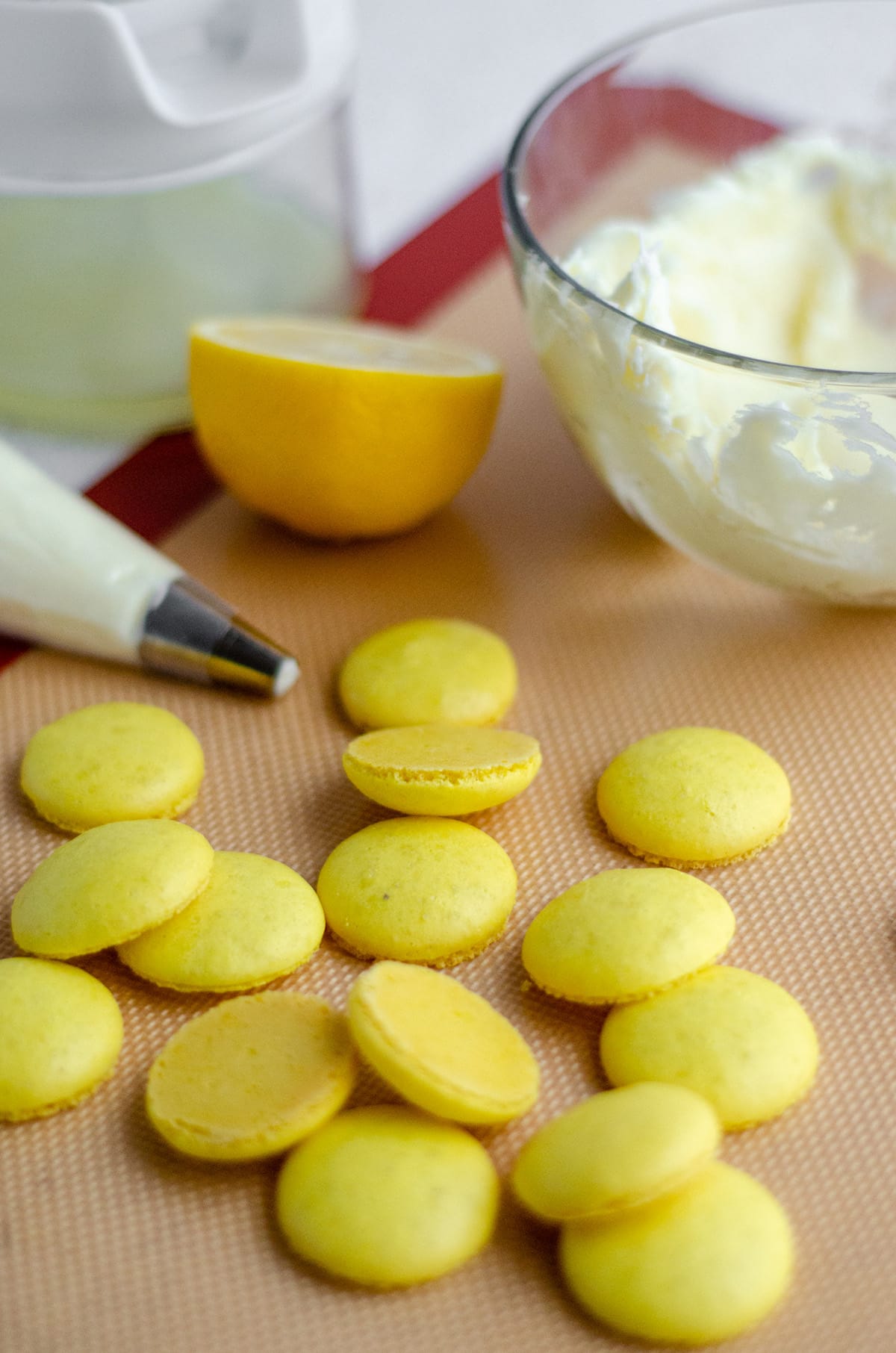
I was disappointed in my first three attempts at these lemon macarons, but I wasn’t devastated. I did some troubleshooting by picking the brains of the people I knew had a lot of experience, and I stuck with the same method and general recipe so as not to change too many variables from batch to batch so I could truly pinpoint what I needed to work on.
My first batch was horrible. I essentially made lemon pancakes. With teeny macaron feet. FAIL.
I also forgot to add salt, so they were pretty sweet, but overall still super delish and we ate them all.
My second batch was strange– I abandoned a weird technique I thought sounded like an “easier” method that produced the lemon pancakes and it resulted in 75% of a batch of deflated macaron shells and 25% beautiful shells with no feet. Getting somewhere but still a fail.
Oh, I also over-salted that recipe, so, slightly yucky though not terrible. We still ate all of them.
This is the point at which I started to troubleshoot big time with friends. It was very clear to me after chatting with others that my batter had too much moisture.
So for the third batch, I reduced my egg whites, felt like I had a beautiful batter, and wound up with what my neighbors deemed “lemon ravioli.” But we had some feet!! So we were getting somewhere further. I just deflated my batter too much (my figure 8 test disappeared in about 12 seconds, so it was too thin, but I piped it anyway).
These were perfectly salted, in fact, so I landed on the perfect combination of ingredients.
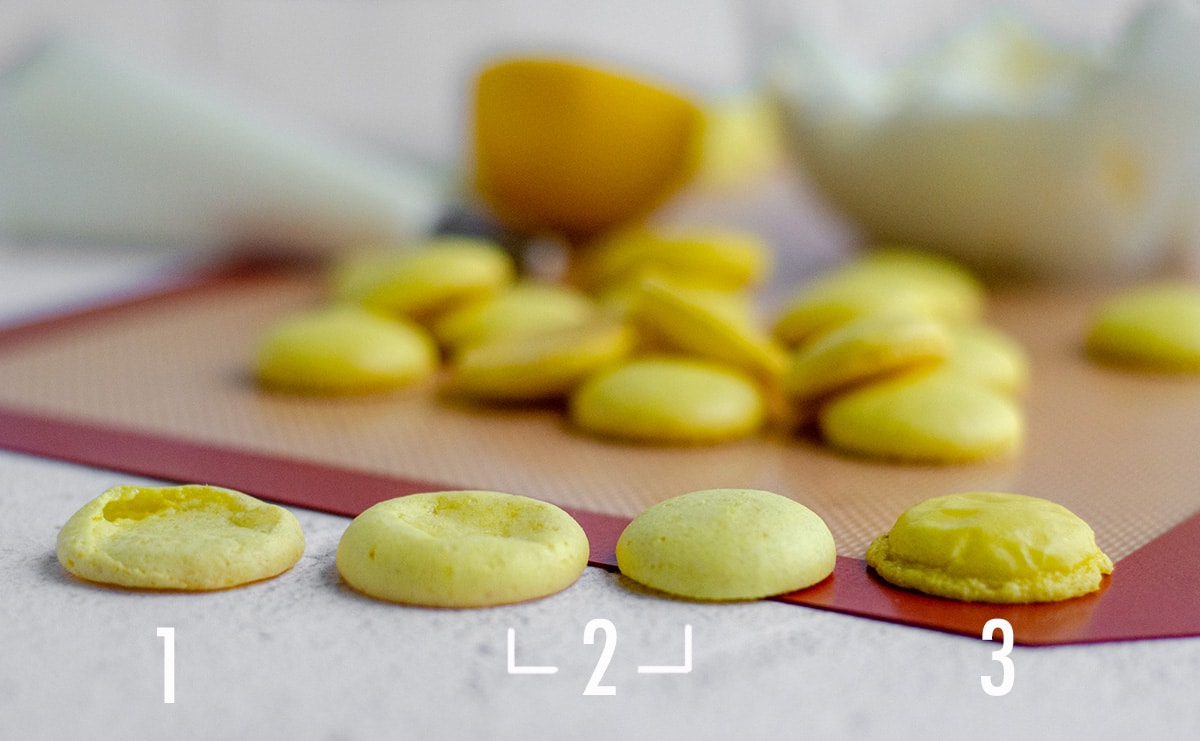
It turns out that the FOURTH time was the ticket. I had the proper amount of moisture, the ideal balance of sweet/tart/salt, and absolutely gorgeous macaron shells with cute little feet.
I had about 35 shells and only a handful had cracked tops. This was a complete and total success, so that recipe, those photos, and that particular method will be what I go to forever more.

This is what works for me, and while it should work for you, as I said earlier, this is just one of those things in life that maybe won’t. Though I urge you to try. Because the satisfaction of nailing the perfect macaron is a better feeling than I thought it would be.
FILL THE MACARONS WITH WHATEVER YOU LIKE
I filled these particular lemon macarons with my favorite lemon buttercream. This lemon buttercream originally appeared on my blog atop my blueberry lemon cupcakes, and you’ll need 1/4 of that recipe for the amount of buttercream needed to fill these macarons. This is the buttercream you’ll find in the recipe below.
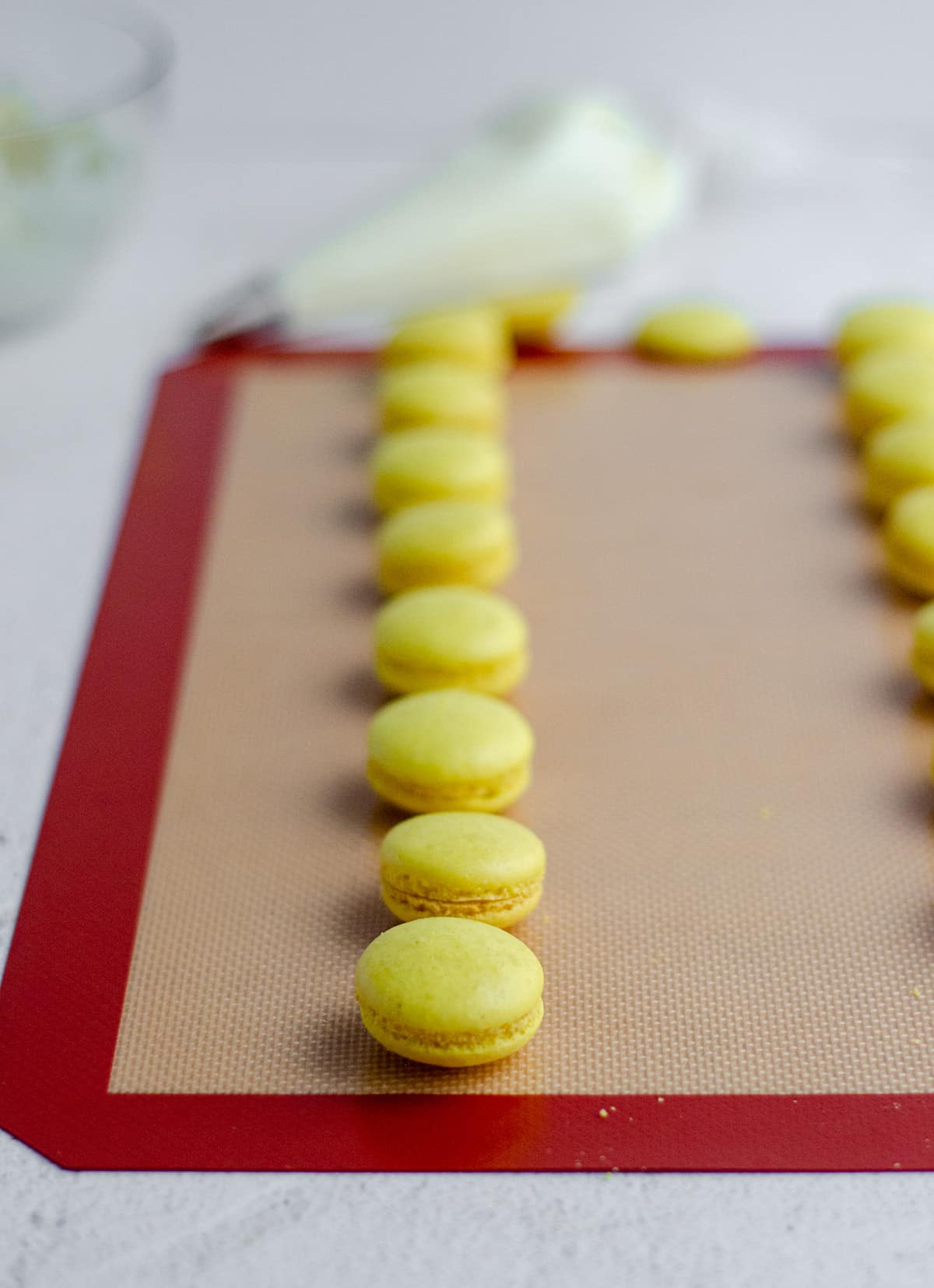
If you’re feeling jazzy, I have a homemade lemon curd filling recipe that would go perfectly with these cuties.
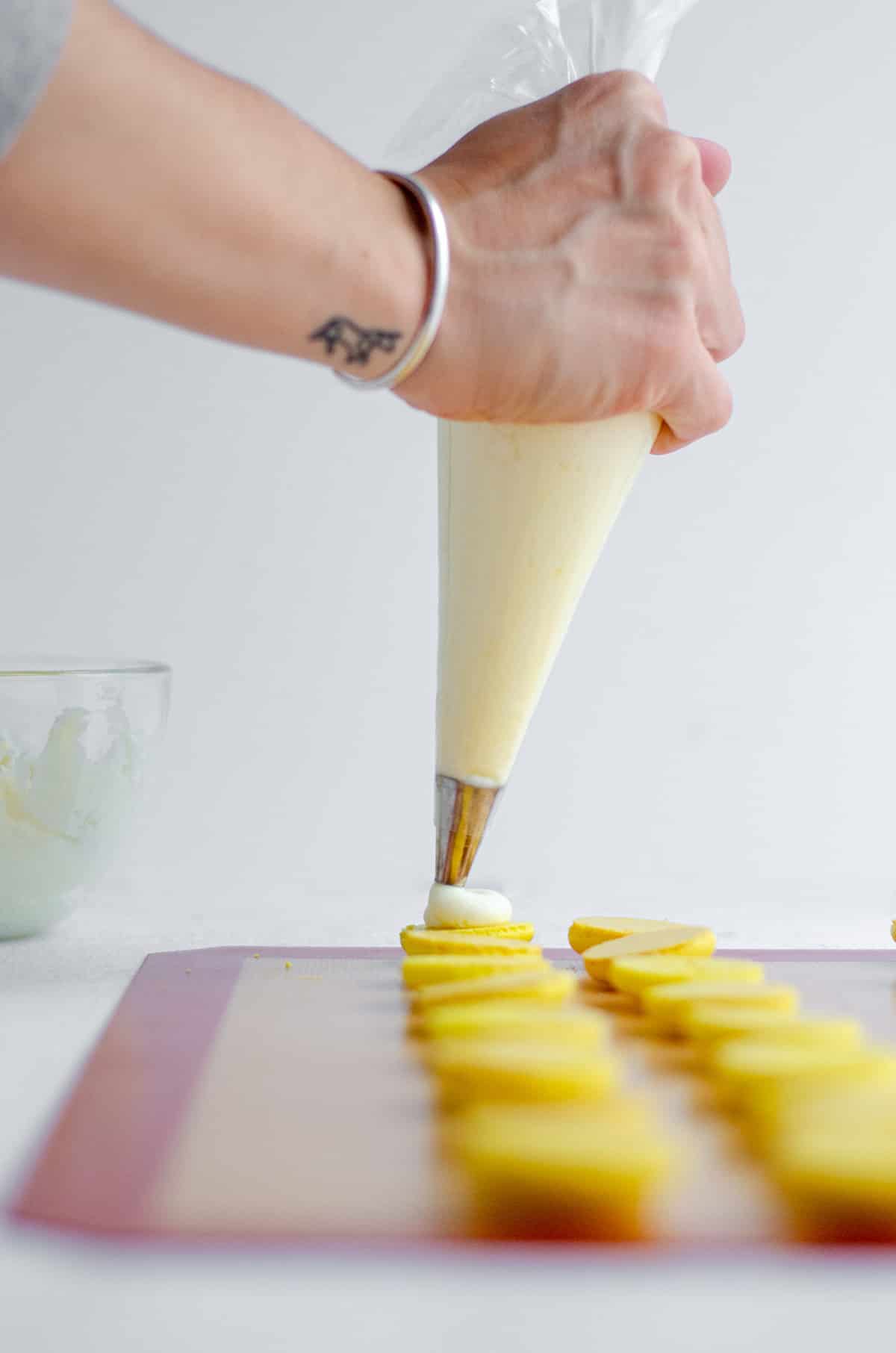
You can use it as is, or you can pipe a small circle of buttercream on a macaron shell before filling that circle with the curd. Either method works, but curd can be a little runny at times, so it’s safest to make a well.
YOU CAN DO THIS!
While these definitely weren’t easy by any means, they were obviously not impossible. And while I do have a very solid base of baking skills, this was the first time I’ve ever attempted any kind of meringue. So it was basically starting from scratch and learning everything!
If you’ve ever wanted to try your hand at this, now is the time. I’ve broken it down for you in an easy-to-follow manner without a bunch of strict rules (some people swear by aged egg whites ONLY, some swear by baking at a way lower temperature and then increasing it, and some swear by rotating pans in the oven…).
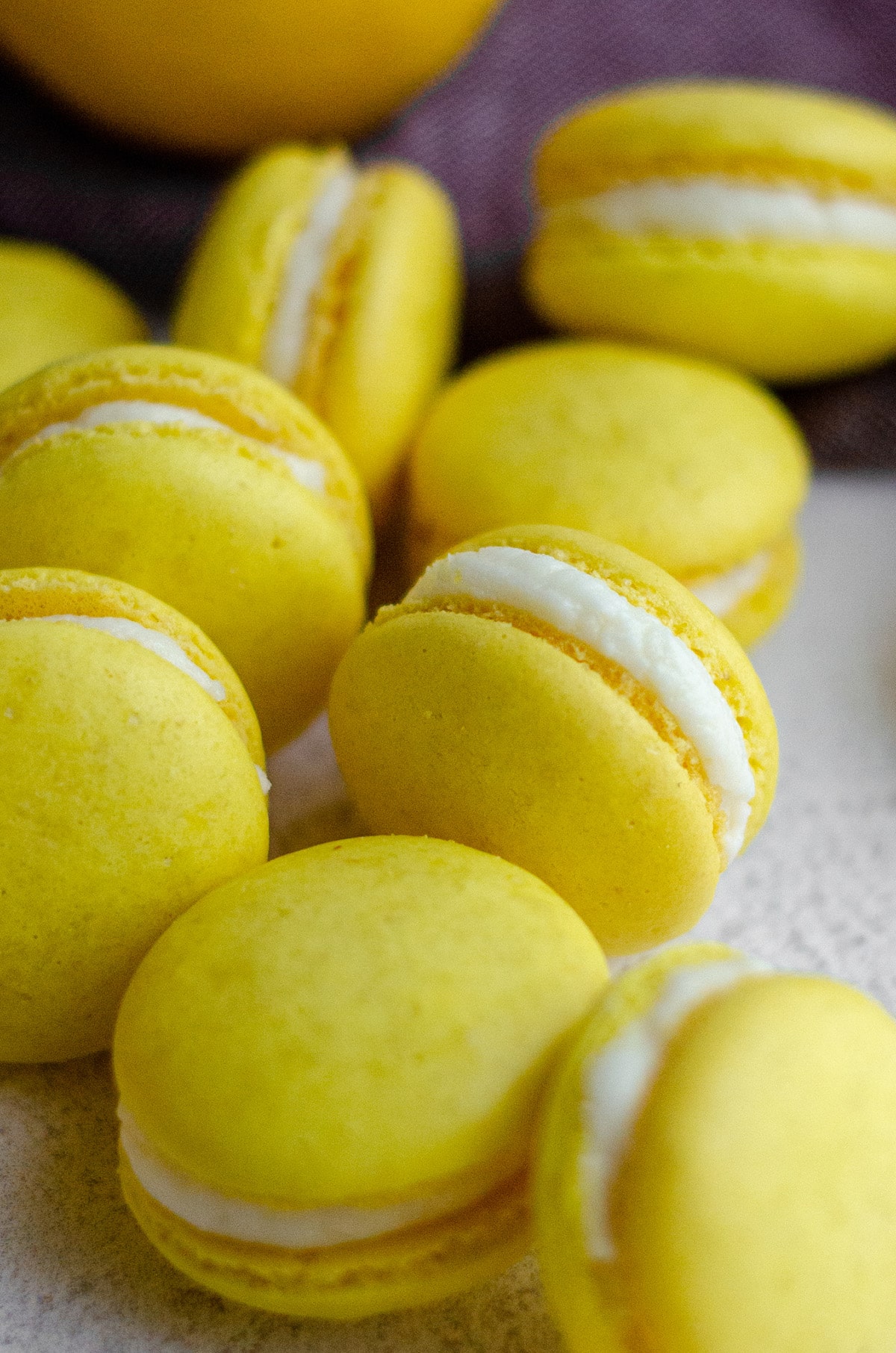
While the whole macaron method does have some specific requirements, I hope I’ve removed some of the scary parts and shown you that you can do this. While I may not be a TOTAL pro (yet?!), I still managed to make some pretty awesome macs.
And I know that you can, too. You’ve got this.
Lemon Macarons
Ingredients
LEMON MACARONS
- 50 grams almond flour or ½ cup + 1 teaspoon
- 50 grams powdered sugar or ½ cup
- zest of half of one lemon
- ¼ teaspoon salt
- 1 (about 30g) large egg white1
- 30 grams granulated sugar or ⅙ cup
- ⅛ teaspoon lemon extract
- yellow gel coloring2
LEMON BUTTERCREAM
- 4 Tablespoons (57g) unsalted butter softened to room temperature
- 1 to 1 and ¼ cups (120-150g) powdered sugar
- zest of half of one lemon
- 1 to 2 Tablespoons lemon juice
- pinch of salt
Instructions
BEFORE YOU BEGIN…
- I highly suggest watching this video on folding macaron batter.
- Use the template provided at the bottom of this blog post to place under your baking mats as a piping guide.
LEMON MACARONS
- Line two large baking sheets with silicone baking mats. Set aside.
- Sift together almond flour, powdered sugar, and lemon zest into a small bowl. You may have to press the mixture through the sifter near the end of the sifting, and some larger pieces of zest or almond flour may be left behind. Discard these larger pieces and sift again into the same bowl. Add the salt, whisk together gently, and set aside.
- Heat a small pot of water over medium heat until it steams. In the bowl of a stand mixer, combine egg whites and granulated sugar. Place bowl over steaming pot, to create a double boiler.
- Whisk the egg whites and sugar vigorously until sugar melts completely and egg whites become white and frothy, about 1 and ½ to 2 minutes. Remove from heat and place bowl back onto stand mixer.
- Fit stand mixer with the whisk attachment and whisk egg white/sugar mixture on high speed until medium peaks form. Stop the mixer, add the extract and food coloring, then, increase the mixer speed to high and beat until stiff peaks form.
- Gently shake half of the dry ingredients into the bowl, then, using a spatula, fold the mixture (do not stir) with the method demonstrated in this video. When all of the dry ingredients are incorporated, shake in the remaining half of the dry ingredients and continue to fold batter carefully and test for consistency when necessary (reference the video).
- Scoop batter into a large pastry bag fitted with a small round tip. Pipe 1" circles onto prepared baking sheets. Bang baking sheet on counter a few times to remove any air bubbles.
- Allow macarons to rest 30-45 minutes until a skin forms. You should be able to lightly run your finger over a mound of batter without disturbing the batter. When a strong skin has formed, preheat the oven to 300°F (149ºC).
- Bake one tray at a time of the macarons for 14 to 16 minutes. After 14 minutes, open the oven, pull the tray slightly out of the oven, and gently push on the edge of one macaron at about a 45º angle. The mound should not move off of the feet. If it moves at all, bake for an additional 2 minutes and test again. When macarons are fully baked, remove from the oven and allow to cool completely on the baking sheet before moving them off.
LEMON BUTTERCREAM
- In a medium size bowl with a handheld mixer, or a stand mixer fitted with the paddle attachment, beat the butter on medium speed until creamy, about 2 minutes.
- With the mixer on low, add in the powdered sugar, lemon zest, and lemon juice. Increase mixer speed to medium and beat until completely smooth, about 3 minutes. If frosting is too stiff, add some more lemon juice or you can use milk or cream. If it is too thin, add more powdered sugar.
ASSEMBLE MACARONS
- When macaron shells are completely cool, carefully remove them from the baking sheets.
- Pair macaron shells together with similarly shaped/sized shells, then flip the shells over so their flat surfaces are facing up.
- Pipe a small amount of lemon buttercream onto one macaron shell, then carefully place the matched shell on top to make a sandwich. Macarons stay fresh at room temperature up to 5 days, or in the refrigerator up to 1 week. Keep in mind, macarons will lose crunch as time goes on. Baked macaron shells freeze well, up to 2 months. Thaw in refrigerator overnight.
Notes
- Egg whites: do not use pasteurized egg whites. Crack an egg and use a real egg white.
- Gel coloring: do not use liquid food coloring. AmeriColor is my go-to gel coloring.
Nutrition Disclosure
All nutritional values are approximate and provided to the reader as a courtesy. Changing ingredients and/or quantities will alter the estimated nutritional calculations.

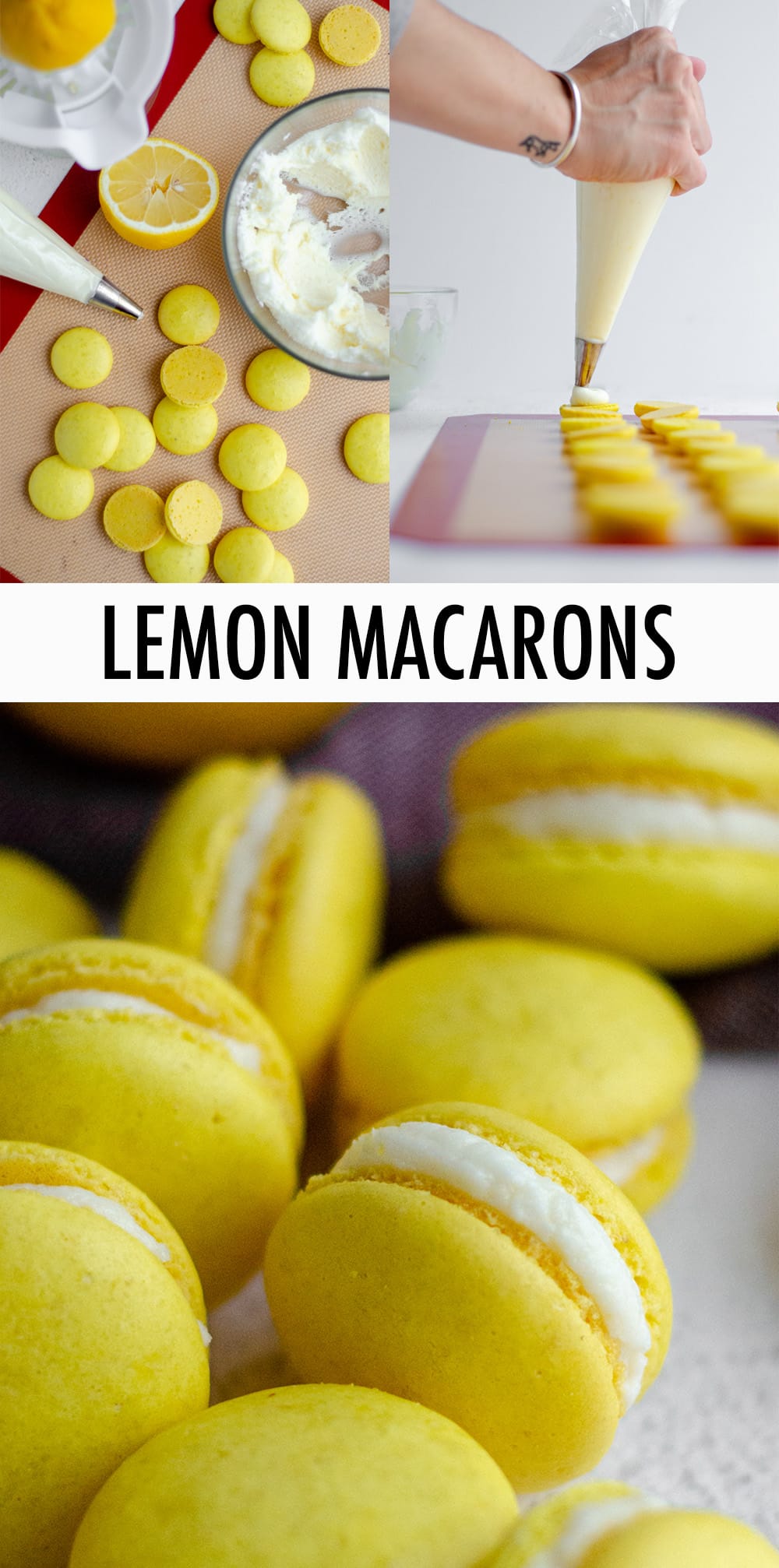

Can I make these without the lemon extract?
Hi, Maria– yes, you can, but the lemon flavor won’t be as strong. Enjoy!
Okay I tried this twice and there is no way I could get 30g of eggs whites and 30g of sugar to beat to anything beyond marshmallow fluff stage. So I added the dry anyway on take 2 and it was a clump of dry hard stuff. Not enough moisture from part 1 to sustain part 2.
Hey, April– I can assure you this recipe works, as I tested it many times (which you can read about in the post). If you’re having trouble turning egg whites + sugar into meringue, make sure you’re using fresh egg whites and not egg whites from a carton which are pasteurized. A 1:1 ratio of granulated sugar to egg whites is standard for meringue/macaron base.
Wow. The photos are the most helpful part of this recipe followed by all of the trouble-shooting you had. I read it SO many times, and went for it. It did take awhile to whip the one egg white & sugar, but that was the only worrying part. Well, that and macronage! But they’re beautiful and possible with preserverance.
Thanks so much, Katja! You did some amazing work!